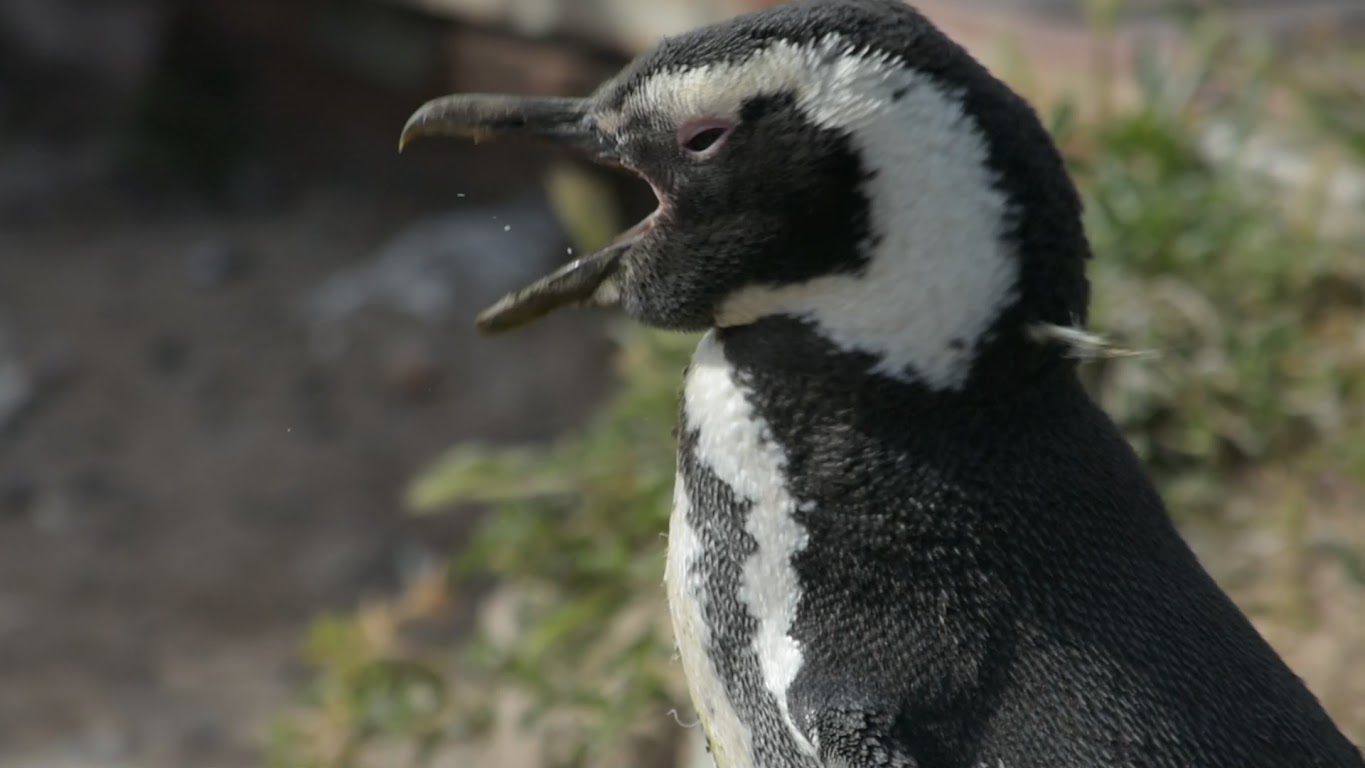6 Iguazu Falls animals you can spot there (+ A Budget Travel Guide)
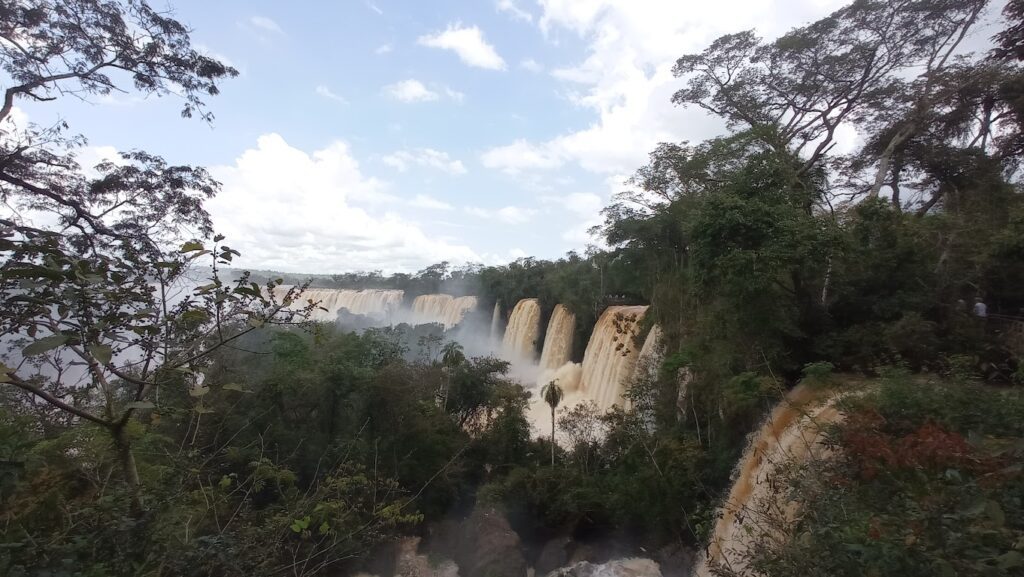
On the border between Brazil and Argentina (and Paraguay too, by a stretch) is one of the most spectacular wonders of nature on the planet: the Iguazu Falls. With 300 roaring falls surrounded by the lush rainforests of Iguazu National Park (replace the z with a c for the Brazilian side), the Iguazu Falls simply cannot be left off of one’s itinerary when passing through. Not that many people make that mistake, of course – with a million annual visitors, these falls have planted themselves firmly on the tourist map.
At a combined 2500 square kilometres, both sides’ versions of Iguazu National Park encompass much more than just the area surrounding the falls themselves. Some of the largest remaining tracts of the Atlantic Forest, along with over 400 species of birds and 80 mammals, live under the protection of these national parks. In theory, many of South America’s charismatic animals including the jaguar live here, but you’d need incredible luck to spot one. To illustrate the chances, in 2016, an employee of the only hotel within the park spotted one for the first time in 11 years of working there.
Still, the Iguazu Falls have plenty of animals that are a lot easier to spot – here are the top six!
Top 6 Iguazu Falls animals
Coatis
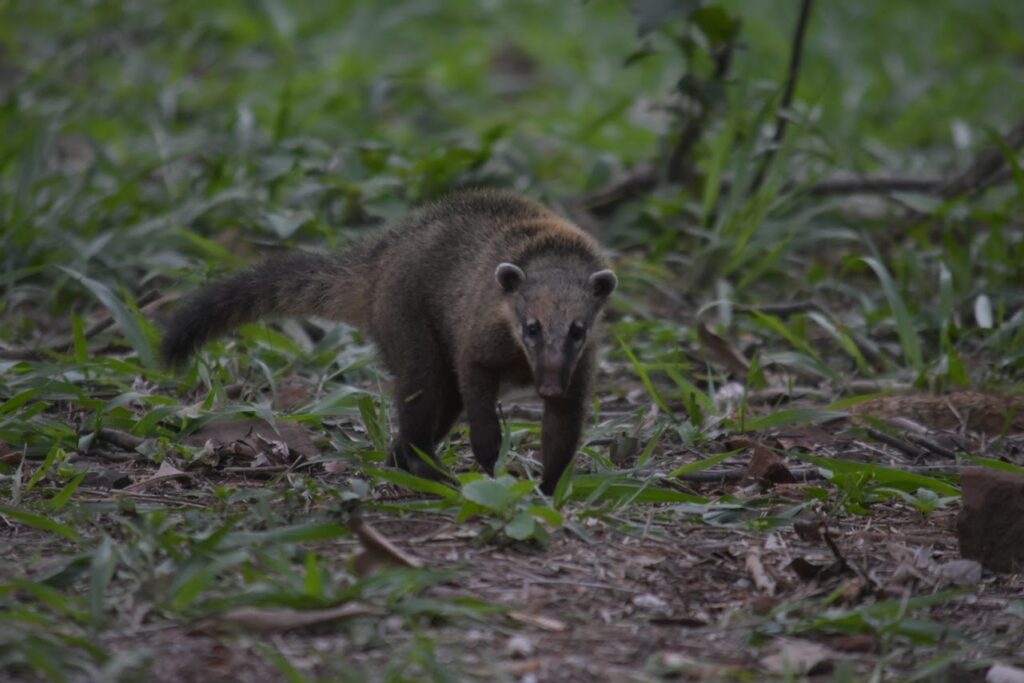
Coatis, a member of the raccoon family with a prehensile tail for climbing (hence why you’ll often see it held up high in the air) are omnipresent around here. The abundance of food, including the park’s rubbish bins, means they can often be seen hanging out around the boardwalks. As with any supposedly tame wild animal, don’t try to stroke them. Numerous signs remind visitors of that and also display some rather graphic images of coati bites in case anybody is feeling rebellious.
Black capuchin monkey
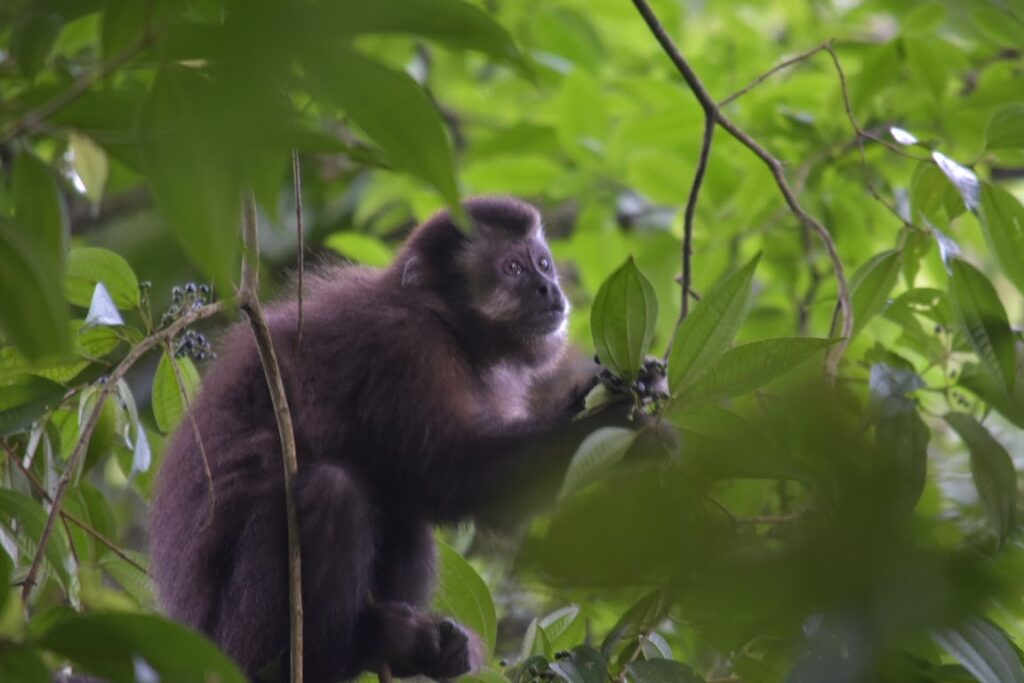
Like the coatis, these monkeys have learned that visitors mean food, and as a result, they’ve little fear of humans. Still, you’re less likely to see them strutting down the boardwalks like the coatis, instead preferring to stay in the surrounding trees and only coming down if some naughty visitor offers them a nibble.
Toucans

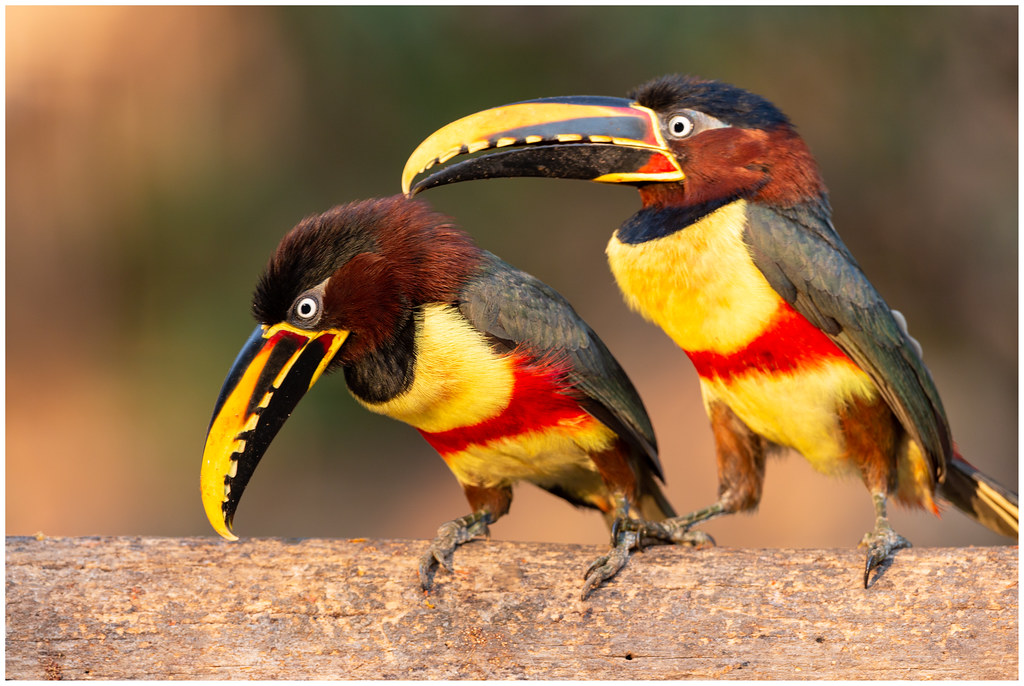
Toucans, one of South America’s most famous birds, can be found flying about the forests or perched in fruit trees as they fill up on berries. You might hear them before you see them, with their calls piercing the ambient sounds of crickets and the river in the distance. You’ll likely see the toucan species everyone knows and loves, the toco toucan, as well as another called the chestnut-eared aracari, whose beak looks like something out of a craft shop in Bahia.
Plush-crested jay
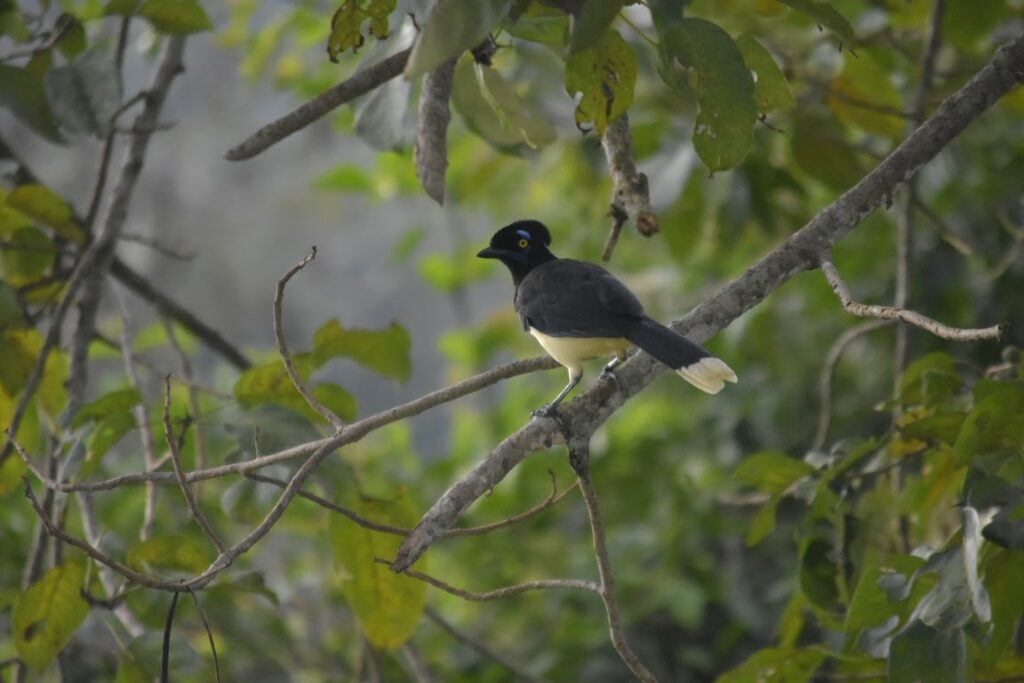
The plush-crested jay. What a bird, and what a name – and its extravagant hairstyle isn’t the only unusual thing about this bird. Living in groups of up to 12 individuals, they are one of the few birds where offspring will help their parents look after their siblings once they themselves come of age.
Great dusky swift
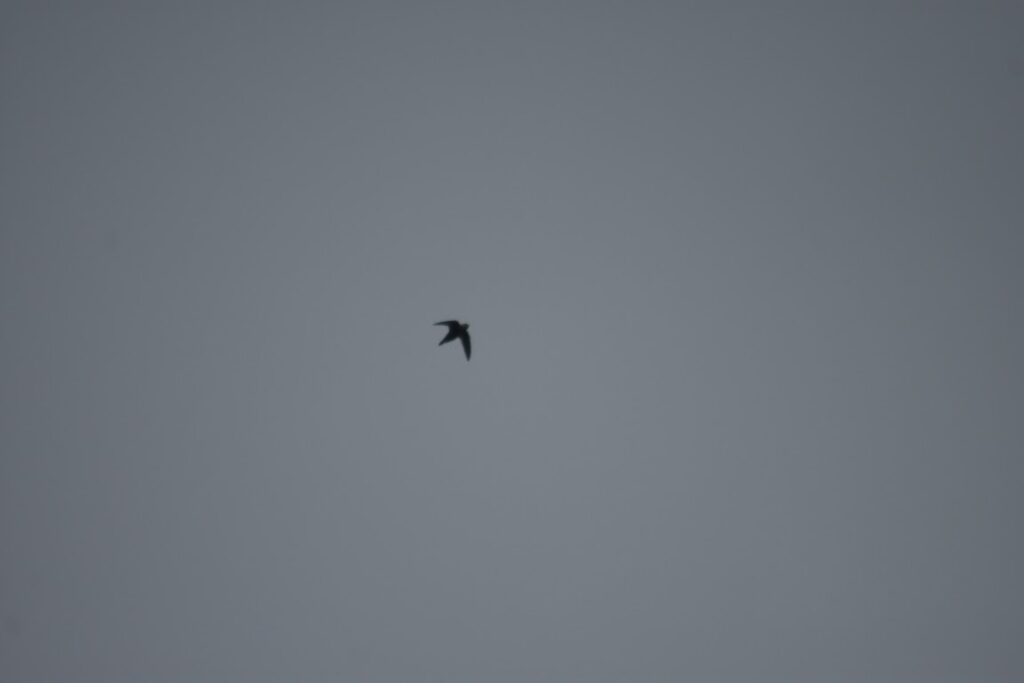
Any time you see images of flocks of birds swirling above the cascading falls, it will be of the great dusky swift. Far from just being here to put on a show, these birds make their nests on the cliffs beside (or even sometimes behind) the water. Unlike its European bretheren, this species doesn’t migrate during the winter, so you can see them here whether the falls are a torrent or a trickle.
Red-Rumped Cacique
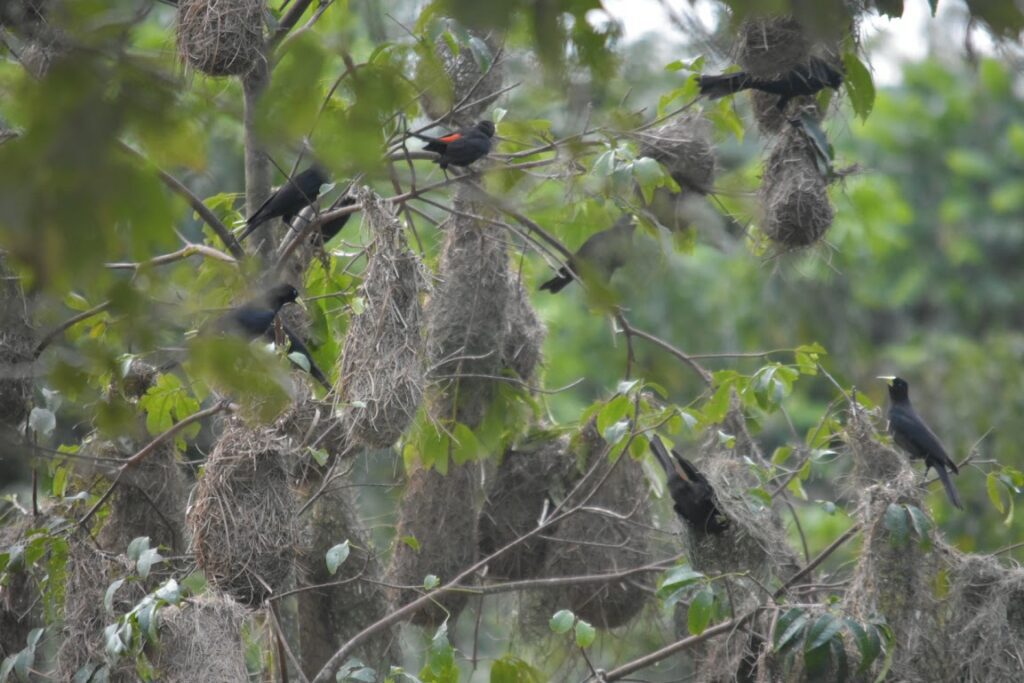
While its ivory bill and flashy red rump make this bird beautiful, what really earns it a place on this list is the nests it makes. These enormous basket-like constructions sag from tree branches like teabags, and since this bird is a colonial nester you can bet there will be many of them. Significant colonies exist on the Brazilian side in the palm trees outside the Hotel Belmont and near the entrance to the boating experience (i.e. the first bus stop). As another fun fact about this bird, it is one of the few that inhabits both the Amazon and Atlantic forests but nowhere in between, giving it an unusual distribution.
Bonus mention: Brazilian cavy (aka wild guinea pigs)
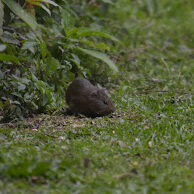
Cavies, the guinea pig’s wild ancestor, can sometimes be found nibbling grass on lawns around shops and hotels in broad daylight. As with coatis, don’t try to stroke or hold them. The Life of Pi said it best: “to grab a wild guinea pig with your bare hands would be like taking hold of a knife by the blade”. It’s a bonus mention since I actually got quite lucky in seeing one pop out at the side of the path: while it wasn’t exactly skittish, its species isn’t particularly abundant around here, so you would need to simply be in the right place at the right time to see one.
A guide to spotting animals around Iguazu Falls
First things first…
How to get to Iguazu Falls’ gateway towns
Foz do Iguacu is the name of the city sitting roughly half an hour’s drive from the falls, and the main access point for anyone coming in from Brazil. Side note: despite sounding like “falls”, “foz” is actually the Portuguese word for “mouth”. Puerto Iguazu, meanwhile, is the town on the Argentinian side.
Both towns have their own airports and are well-served by buses.
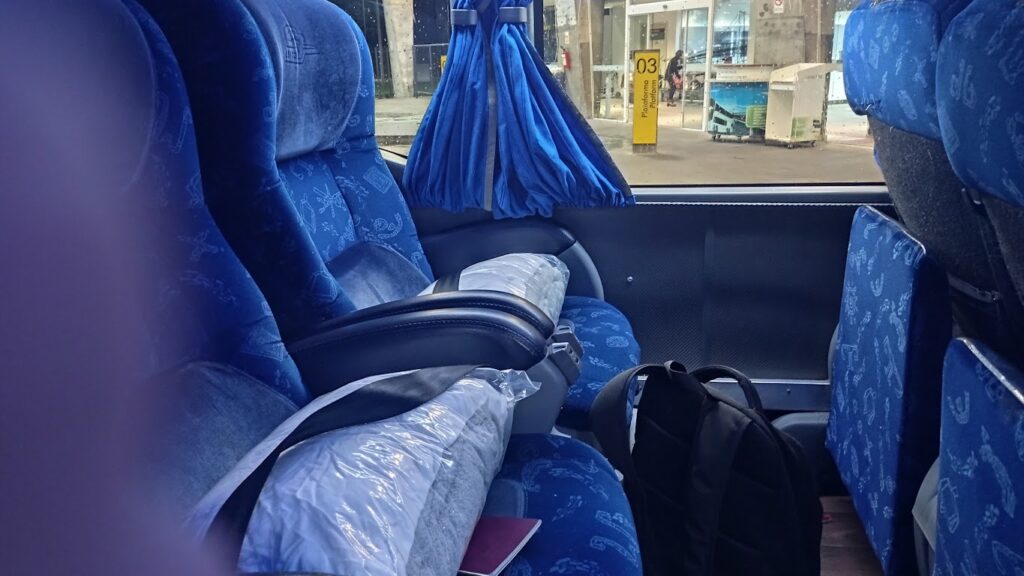
How to get to Iguazu Falls from Puerto Iguazu/ Foz do Iguacu
The Spanish and Portuguese word for “waterfalls” is “cataratas”, so keep your eyes out for it or use it when asking for directions.
In Brazil, you can either go with a tour group that will provide a shuttle to the falls themselves, or go independently by taking bus number 120 from the city to the national park entrance. Ask staff at your accommodation where the nearest stop is, as its route isn’t on Google Maps. From the entrance where you’ll pay your entry fee, double-decker park buses will take you down the road to the viewpoint. They’re windowless on the sides, so you’ll get a pleasant breeze wafting through.
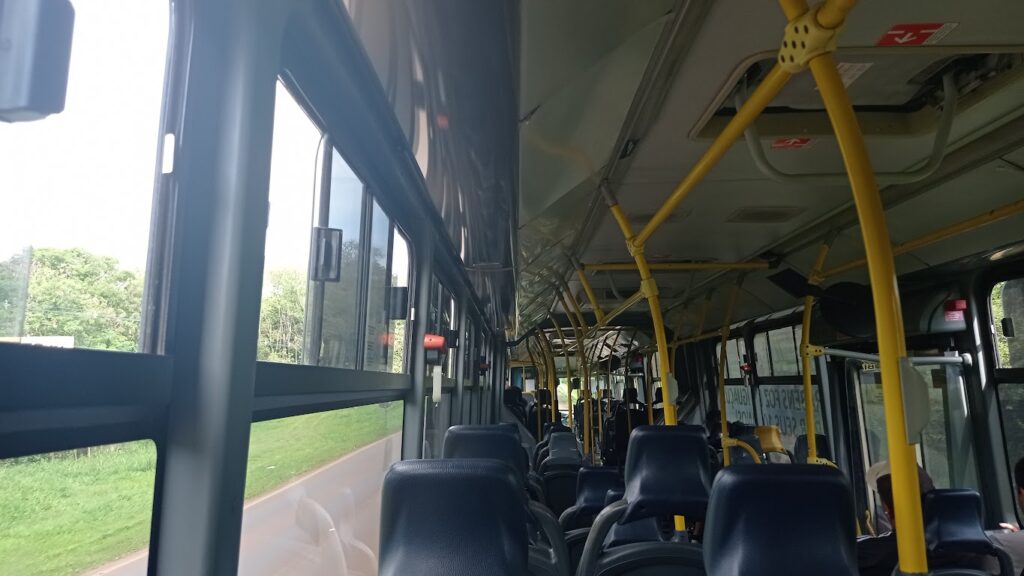
On the Argentinian side, independent travellers should head to the bus terminal and go to the Rio Uruguay counter. It’s the first on the right as you enter, and has signs all over advertising its buses to the falls. On this side, one has the option of walking down a trail through the forest or taking a small train. English-built locomotives cruise along the park’s short railway, with the whole journey taking about twenty minutes. The entrance area is much more sprawling here, and you’ll have to walk some distance before getting to the point where the train departs. If you hear park staff shouting out “tickets”, go up to them and get yours. Although it doesn’t cost anything extra, you will need one to board the train.
Additionally, from either side, you can travel directly to the other’s cataratas on tours.
Walking the trails around Iguazu Falls (i.e. how to spot animals)
On both sides you’ll primarily be viewing the falls from a boardwalk – the Brazilian one hugs a cliff, while Argentina has two: one running along the top of the falls that gives a side-on view, the other going a little lower down and giving a view from the front. These can be great places to see butterflies that lick the spray off the railings, coatis and monkeys looking for food from visitors, and great dusky swifts and vultures swirling above the falls themselves.
On the Brazilian side, you can walk up the road to Hotel Belmont where red-rumped caciques and small green parrots make their nests in the palm trees. Across the road from this hotel is another, somewhat hidden, trail leading through the forest. It’s short but worth doing in case you see anything – I managed to spot a bird called a trogon in the bushes here.
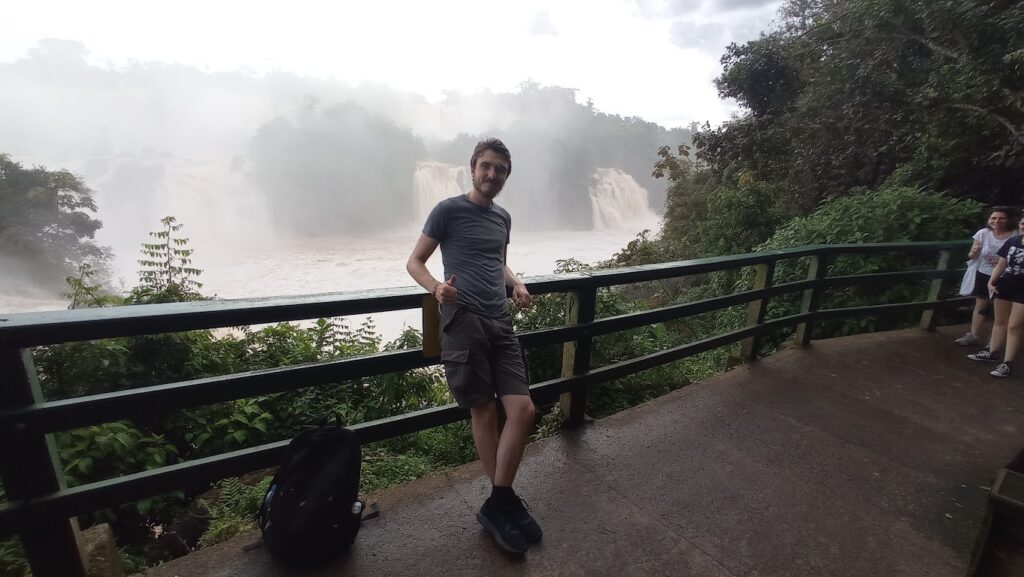
On the Argentinian side, there are many more opportunities for trails: one runs parallel to the railway, the boardwalk trails are much longer than their Brazilian counterparts and go through much more forest, and there are a couple of small ones branching off from the amusement park at the end of the complex.
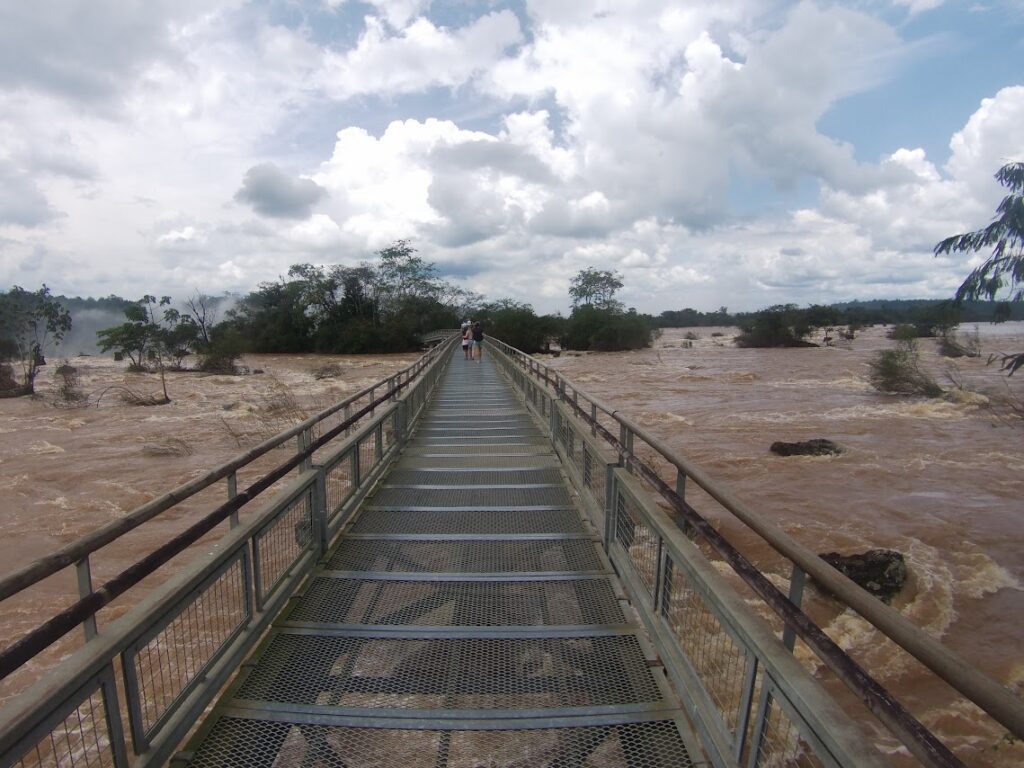
Be sure to take plenty of water, mosquito repellent and sunblock, since the water can reflect the sun’s rays.
What else there is to do in the area
Puerto and Foz do Iguacu are definitely not a pair of one-trick ponies.
This area rests on the meeting point of the Brazilian, Argentinian and Paraguayan borders, and visiting the tri-border area will get you a view of many things: the Friendship Bridge, a suspension bridge across which traffic moves from Brazil into Paraguay; boats cruising between the three, completely unimpeded; a giant Paraguayan flag on their corner; and a rather spectacular sunset, should you happen to visit at that time. Entry to Argentina’s is free, entry to Brazil’s is R$25, and entry to Paraguay’s is free but pointless since there’s not much more than a car park and a dirt road here.
The river separating Brazil from Paraguay also contains the Itaipu Dam, and if the Friendship Bridge didn’t make the civil engineer in your group blush, this dam certainly will. It produces the second-most electricity of any hydroelectric dam, supplying over 75% of Paraguay’s electricity needs and 25% of Brazil’s. Tours are available for free on the Paraguayan side and various pricing levels on Brazil’s.
Paraguay gets most of its tourist traffic through either this dam or Ciudad del Este, a border city near Foz do Iguacu. It can be quite a seedy place, the realm of pirated DVDs, bootlegged bags, guards with shotguns and shops funding Hezbollah. Nonetheless, Brazilian and Argentinian tourists flock here to buy cheap goods, since Paraguay’s lack of taxes and tariffs means a lot of things (electronics included) are cheaper in this country. For foreign visitors, there’s little of interest in this city unless you want to do some shopping yourself.
Other things to consider doing in Paraguay are some of the reserves that were created by the Itaipu Dam’s holding company, as way of recompense for flooding a swathe of pristine Atlantic Forest. Campsites here are well-equipped and free, and make for a nice getaway if you have a car or campervan.
Foz do Iguacu is home to one of Brazil’s largest Buddhist temples, which is a great place to escape the hustle and bustle of the surrounding streets.
Puerto Iguazu contains Jardin de los Picaflores, a garden full of hummingbirds. Unfortunately, it was closed when I tried to visit, despite this being within opening hours, so you may need to call or text ahead to ensure it will be open.
Budget accommodation in Foz do Iguacu

On the Brazilian side, I personally stayed at Selina Foz, a hostel that’s part of a wider chain and the favourite option for every flashpacker who’s heard of them. Like many in the chain, this hostel is an exercise in interior design; the wall art and wicker furniture, along with the pool in the backyard and palm trees surrounding it, give this place a five-star feel. And yet, beds in dorms are only R$60 per night, and come with privacy curtains, power sockets in the lockers themselves and what may well be the softest mattresses in Brazil.
Other solid options include Airbnb which, as is par for the course in Brazil, usually only costs a couple of pounds more than the price of a dorm. However, you won’t get a kitchen. Eating out in Brazil is by no means expensive, but if you’re travelling on an ultra-tight budget this might be worth bearing in mind.
Budget accommodation in Puerto Iguazu
I personally stayed at Cataratas Jazz Hostel and, while it definitely wasn’t as luxurious as Selina, was still a solid budget option. For one thing, breakfast was included, a mix of coffee, scrambled eggs, black beans and toast. For another, it was well-located, only two blocks away from the bus terminal and a hundred metres away from the police station. Not that Puerto Iguazu has much of a crime problem, I’m told.
Aside from this, there are several different hostel options in Puerto Iguazu, some of which have swimming pools. Airbnbs are also available, though it should be said that you won’t be able to get blue dollar prices since all payments are done online.
How much does it cost to visit Iguazu Falls?
On the Brazilian side, the entry fee for foreigners is R$107 (£18), and public buses cost R$5.50 (£1) each way.
Argentina’s side of the falls can either cost £13 or £23, and the bus will either cost £2.35 or £4.50. I go into a bit more detail as to why there are two potential prices in the next section.
A quick explanation of Argentina’s blue dollar
Argentina’s high inflation means that many people convert their income into a more stable currency, usually US dollars, as soon as they get it. Attempts by the powers that be to discourage this through currency controls and limits on how much people can hold in foreign currency led to a parallel exchange rate, currently double the official one.
In short, if you can get your hands on a stack of Argentinian pesos at blue dollar rates, you’ll end up paying half of what you would if you were to pay at the official rate. For the avoidance of doubt, any payments made by card, currency exchanged at banks or ATM withdrawals* will be done so using the official rate.
To get the blue dollar rate, one can either find an exchange place called a “cambio” or send themselves money via Western Union. The latter will actually tend to get you a better exchange rate than the blue dollar rate, since cambios generally need to be haggled with plus involve bringing cash into the country.
*Adding insult to injury, ATM withdrawals also incur a 10-15% fee.
Getting blue dollar exchange rates in Puerto Iguazu
Puerto Iguazu has a Western Union branch and the post office can also process payments – however, neither are to be relied upon. Both times I went to the post office, they said it wasn’t working, and I got the same response at the Western Union office with the addition of “it may be working again on Saturday”. That didn’t do me much good, since I’d be leaving on Thursday.
So if you’re coming over from Brazil and want to avoid paying double for your stay in Puerto Iguazu, you’ll need to bring a decent amount of cash. 300 Brazilian Reais or the equivalent in another currency should cover a short stay, including entry to the falls. If you want to be absolutely sure that the Cambios will accept it, convert it to either US dollars or euros since these are the preferred currencies. Also, make sure they are in crisp condition – no tears, no marks, no creases. You can also haggle for a better exchange rate if you’re exchanging a large amount or have larger bills.
There are two Cambios in the centre of town, both of which are on Google Maps. Ask a local if you get lost, since everyone will know where they are. As there are only two Cambios, you’ll probably not get an amazing blue dollar exchange rate. Still, it will be miles better than the official.
As a side note, one of the Cambios converted my fistful of Scottish pound notes that I hadn’t made use of until now. Rather unexpected, considering how often shops in England refuse to accept them.
Photo credits
“Chestnut-eared aracari – Bruinoorarassari (Pteroglossus castanotis) …” by Martha de Jong-Lantink is licensed under CC BY-NC-ND 2.0.




